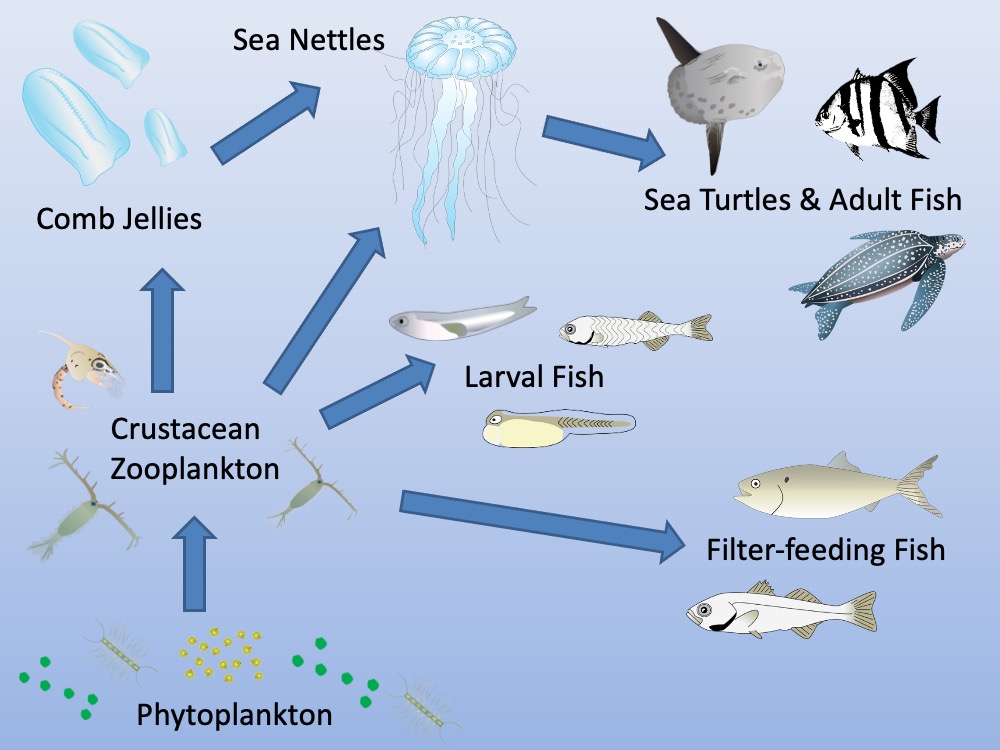Food Web
Jellyfish can be the dominant zooplankton during certain times of the year, and during those times they influence many other parts of the Chesapeake Bay ecosystem. The text and diagram below describe some ways they interact as prey and predators of other species.
Phytoplankton
At the base of the Chesapeake Bay’s food web are phytoplankton. These single-celled organisms photosynthesize and grow using light, water, and nutrients. They are most abundant in the spring and summer when water temperatures are warmer and the days are longer, providing more light.
Crustacean Zooplankton
While many animals consume phytoplankton, some of their main grazers are crustacean zooplankton. This can include the most common animal in the Bay, the copepod, as well as larval crabs and shrimp.
Comb Jellies
Comb jellies (or Ctenophores) feed on phytoplankton as larvae, but quickly begin to feed on crustacean zooplankton once they grow larger. Their populations explode in the spring, and where they’re abundant, they can eat almost all of the copepods in the area. This means that they complete directly with larval and filter-feeding fish who also feed on crustacean zooplankton.
Sea Nettles
Sea nettles are the top zooplankton predator in the Chesapeake Bay, and while they do eat crustacean zooplankton and small fishes, their main prey item is comb jellies. Sea nettles reproduce when water temperature reach around 62oF in the spring, so years with a warmer spring and lower rainfall (and thus higher salinities) have more sea nettles. Once the sea nettles begin to reproduce, they quickly eat many of the comb jellies and help to control their population.
Bony Fish & Sea Turtles
Sea nettles are also an important food source for some of the largest animals in the world; both the largest bony fish (Mola mola) and the largest sea turtle (the Leatherback sea turtle Dermochelys coriacea) subsist almost solely on jellyfish. In Chesapeake Bay, many fish, including the Atlantic Spadefish and Butterfish, feed on sea nettles.


